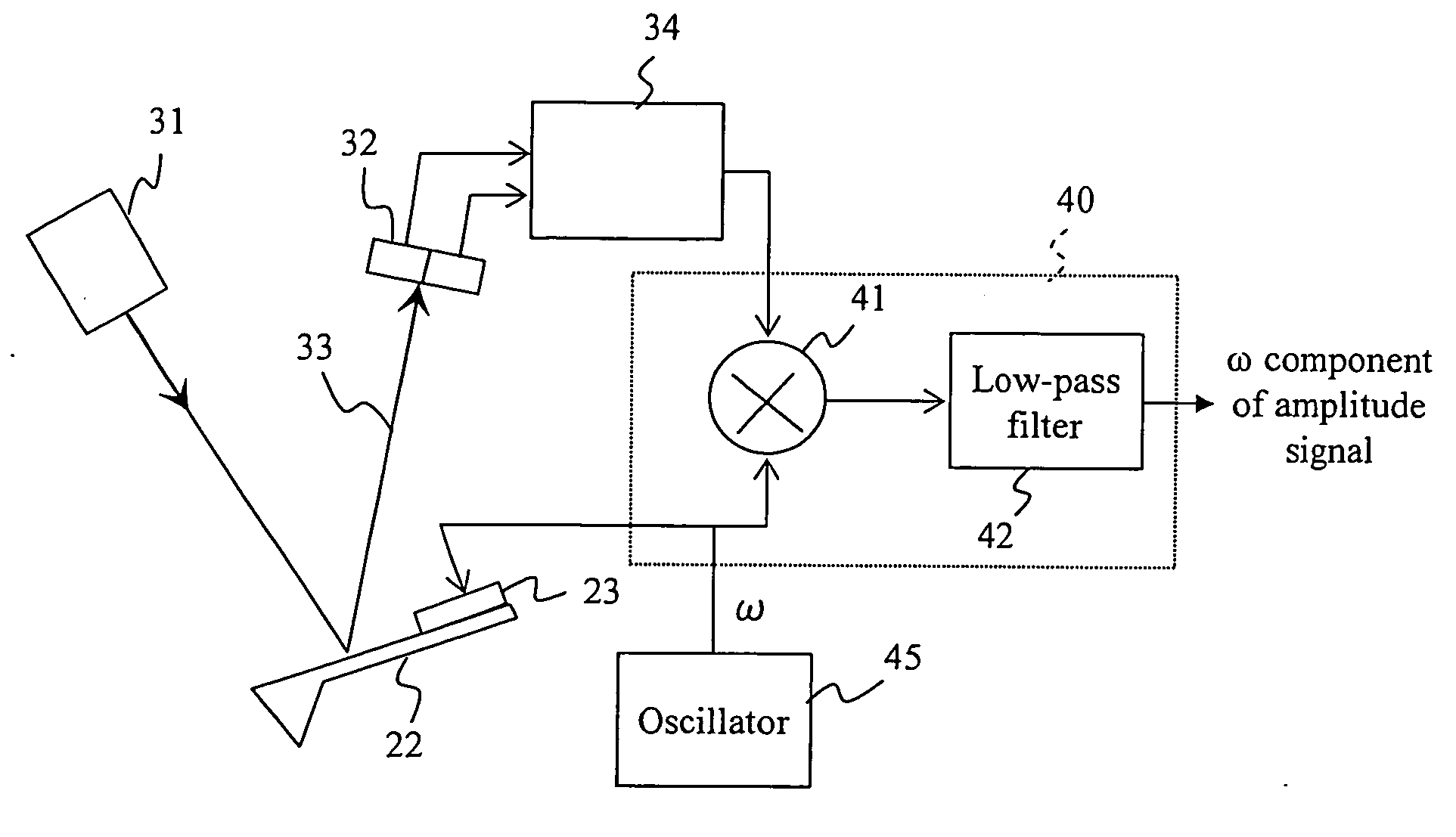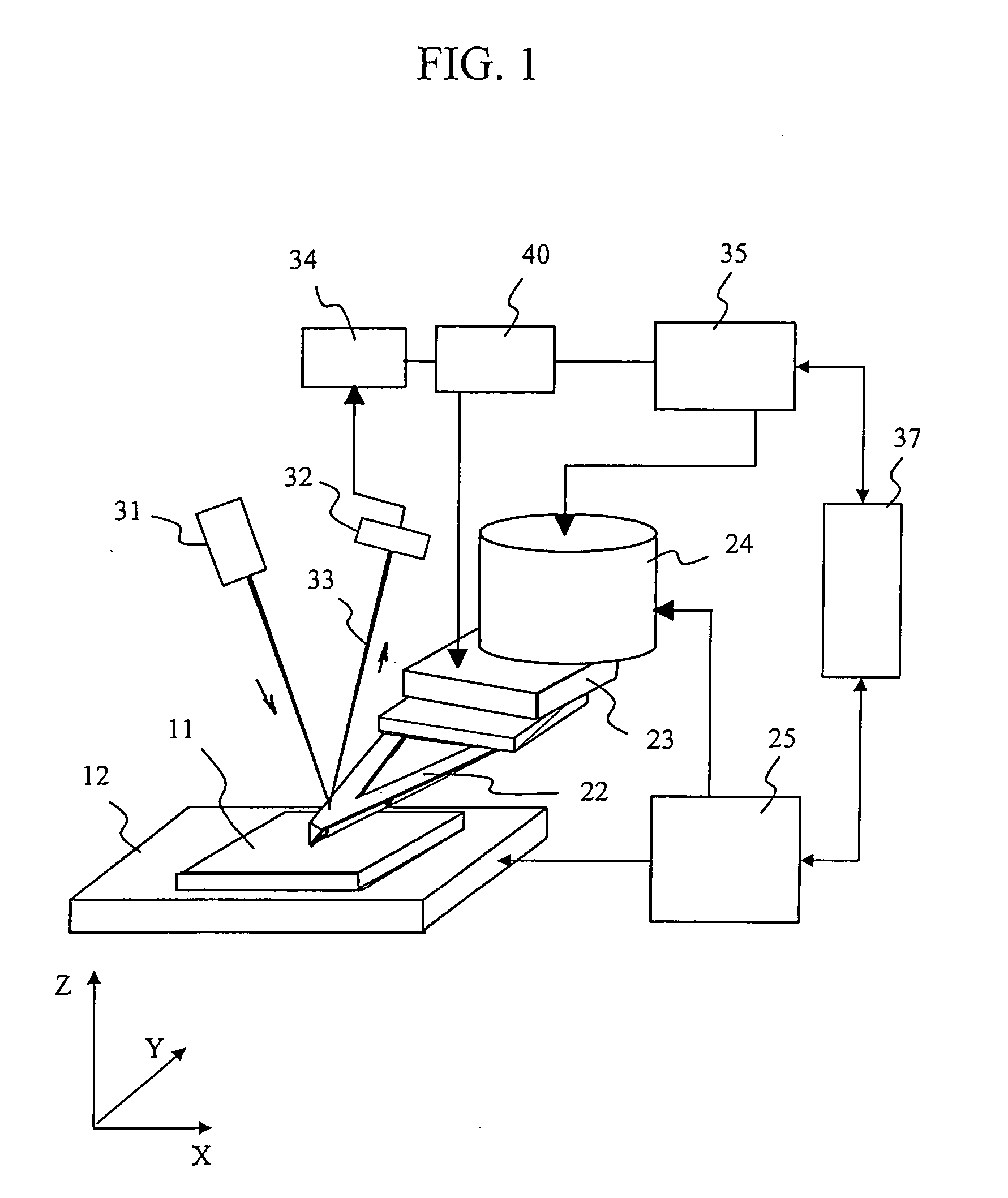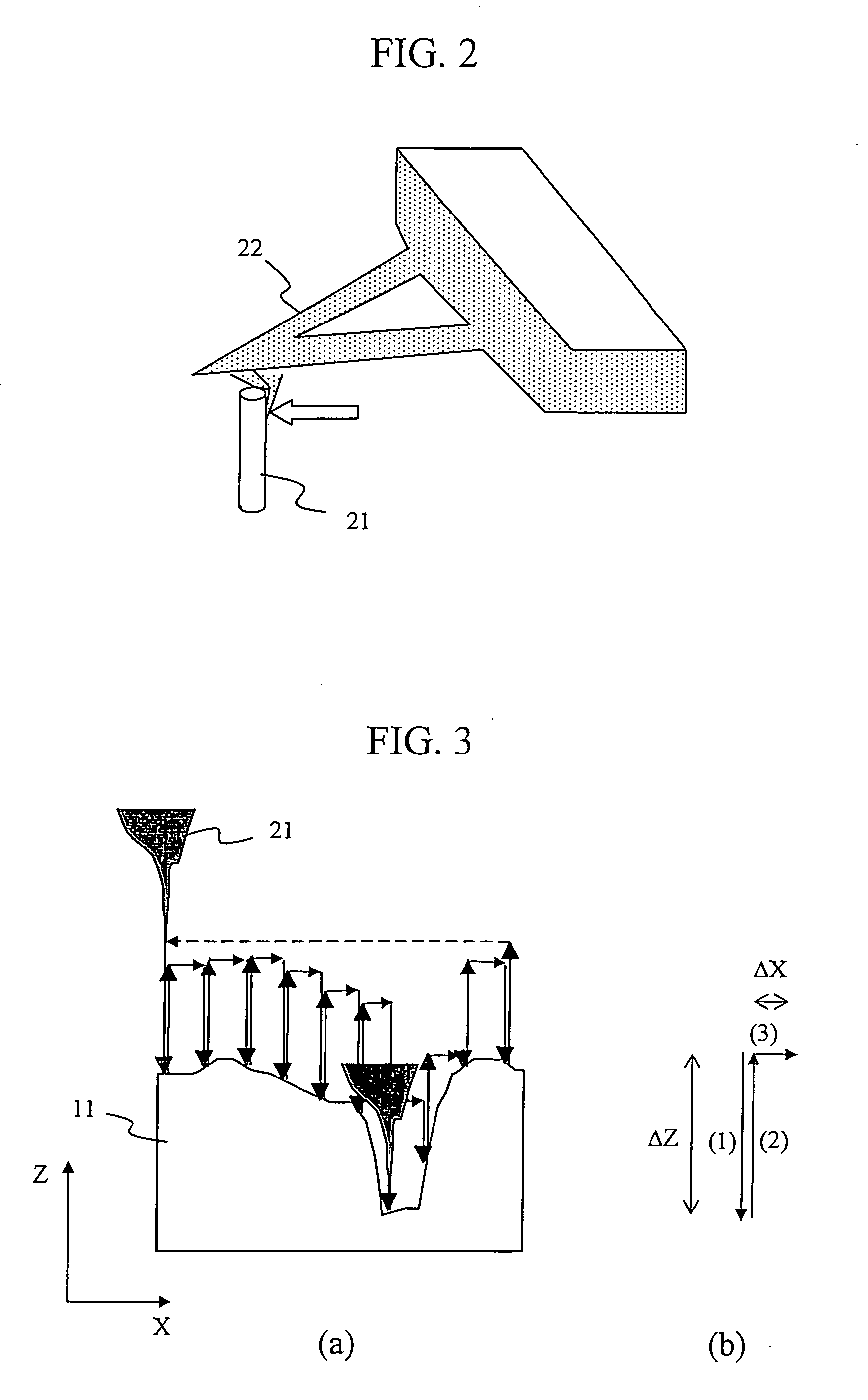Scanning probe microscope and specimen surface structure measuring method
- Summary
- Abstract
- Description
- Claims
- Application Information
AI Technical Summary
Benefits of technology
Problems solved by technology
Method used
Image
Examples
first embodiment
[0030]FIG. 1 is a block diagram showing an example of the digital probing AFM of the present invention using the slope detection method. In addition to the usual AFM structure, this digital probing AFM contains a vibration mechanism for detecting the atomic force gradient.
[0031] The specimen 11 is mounted on the XY specimen stage 12. The XY specimen stage 12 is moved coarsely by the XY scanning circuit 25 so that the measurement region is selected directly below the probe. The cantilever 22 with the probe is attached on an exciter piezoelectric element 23 and a cylindrical XYZ scanning piezoelectric element 24. A normal optical lever method made up of a semiconductor laser 31, a position detector 32, and a force detector 34 is utilized as the force detector. The servo circuit 35 drives the probe in the Z direction by means of the XYZ scanning piezoelectric element 24, and servo controls the force to a fixed value with the signal detected by force detector 34. The XY scanning circui...
second embodiment
[0043]FIG. 6 is a concept block diagram of showing another example of digital probing AFM in the present invention. In addition to the usual AFM structure, this digital probing AFM contains an FM (frequency modulation) detection type atomic force gradient detector.
[0044] In the example in the drawing, the force detector utilizes an optical lever system made up of a semiconductor laser 31, a position detector 32, a force detector circuit 34. However in order to detect the force gradient, the frequency is demodulated using a PLL (phase-lock-loop) circuit 50 and the change in the force gradient detected from the change in the frequency. The servo system, scanning system, proximity mechanism, and probe position detector identical to the first embodiment are utilized to regulate the detected signal to a fixed value. Unlike the first embodiment, an external oscillator (or vibrator) is not used for self-vibrating the probe, instead a resonance circuit system in the internal circuit networ...
third embodiment
[0050]FIG. 9 is a concept block diagram of a semiconductor scanning device utilizing a digital probing AFM incorporating the slope detection method. The semiconductor scanning device shown in the figure contains an AFM having a function using the vibration method for detecting the atomic force gradient. This device further contains a chip position detection function for measuring at an optional measurement position within the semiconductor chip, as well as a computer processing function for automatic measurements.
[0051] The force detector for the AFM utilizes the optical lever method. This force detector is made up of a semiconductor laser 31, a position detector 32, and a force detector 34. A lock-in amplifier 40 detects the force gradient the same as in the first embodiment. An approach device (not shown in drawing) is installed to make the probe 21 approach the surface of the specimen 11 (semiconductor chip).
[0052] In addition to the AFM measurement means, this embodiment furth...
PUM
 Login to View More
Login to View More Abstract
Description
Claims
Application Information
 Login to View More
Login to View More - R&D
- Intellectual Property
- Life Sciences
- Materials
- Tech Scout
- Unparalleled Data Quality
- Higher Quality Content
- 60% Fewer Hallucinations
Browse by: Latest US Patents, China's latest patents, Technical Efficacy Thesaurus, Application Domain, Technology Topic, Popular Technical Reports.
© 2025 PatSnap. All rights reserved.Legal|Privacy policy|Modern Slavery Act Transparency Statement|Sitemap|About US| Contact US: help@patsnap.com



